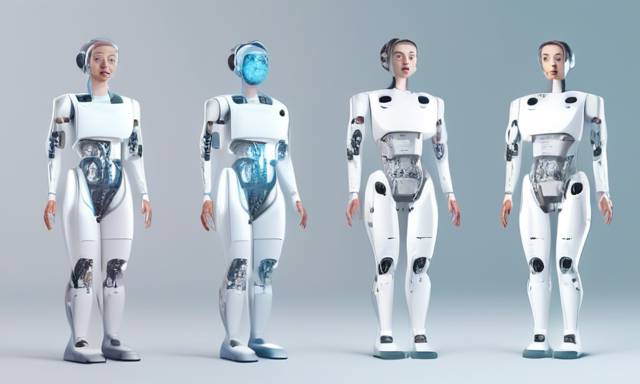Tony Kim
Oct 15, 2024 03:59
NVIDIA enhances surgical robotics through AI-driven simulation and digital twin technology, aiming to improve surgical outcomes and democratize healthcare access.
Transforming Surgical Practice with AI and Robotics 🤖
For the discerning crypto reader, the advancements in surgical robotics provide a fascinating glimpse into how technology is reshaping medical procedures. The introduction of robotic surgical assistants (RSAs) stands to offer significant benefits, streamlining operations while enhancing the experience for both medical professionals and patients. According to insights from NVIDIA’s research, these advanced platforms allow trained surgeons to perform with greater dexterity through remote control, potentially optimizing workflows and alleviating the physical demands on surgeons.
New Frameworks for Enhanced Surgical Support 🛠️
NVIDIA has unveiled two innovative frameworks aimed at revolutionizing surgical assistance: the Surgical First Interactive Autonomy Assistant (SuFIA) and its updated version, SuFIA-BC, which employs behavior cloning techniques. SuFIA utilizes natural language commands and large language models (LLMs) for strategic planning, while SuFIA-BC focuses on increasing precision through behavior cloning methods. Both frameworks leverage the latest advancements in machine learning to confront the specific challenges posed by surgical environments.
The core objective of this initiative is to hasten the evolution of surgical robotic assistants. By reducing surgeon fatigue and enhancing patient safety, these frameworks aim to widen access to premier healthcare services. Demonstrated in a variety of surgical tasks, both SuFIA and SuFIA-BC reveal promising capabilities to redefine surgical methodologies.
Creating Realistic Training Platforms 🎮
The NVIDIA research team has improved upon the ORBIT-Surgical framework, crafting realistic training scenarios featuring anatomically precise models and high-quality visual rendering powered by NVIDIA Omniverse. ORBIT-Surgical serves as an open-simulation platform, designed to facilitate learning in surgical settings while utilizing Isaac Lab. This modular infrastructure for robotic learning is based on Isaac Sim and includes resources for both reinforcement and imitation learning.
Utilizing Digital Twin Technology in Medical Procedures 🌐
Through a sophisticated digital twin workflow, NVIDIA is producing high-fidelity synthetic data essential for training and assessing models in intricate surgical tasks. This approach involves generating photorealistic anatomical representations from CT scans, which then inform the development of behavior cloning models. The research scrutinizes several visual modalities, including RGB imagery and point cloud data, to maximize training effectiveness.
Evaluating Policies and Expert Demonstrations 🧪
Five primary surgical subtasks were scrutinized during this research: tissue retraction, needle lifting, needle handover, suture pad threading, and block transfer. Findings reveal that point cloud-based models excel in spatial tasks, while RGB-based models outperform in scenarios requiring color recognition. The study underscores the significance of sample efficiency and the influence of model architecture in achieving effective training with limited demonstrations.
Moreover, the resilience of models to varying camera perspectives was evaluated. Point cloud models exhibited remarkable robustness, indicating their readiness for practical application in surgical contexts.
Innovating for the Future of Surgical Robotics 🚀
The outcomes of this research pave the way for exciting opportunities within the realm of surgical robotics. With the introduction of open-source tools, further exploration and development in the field is encouraged. Researchers can harness these resources to further advance robotic surgical techniques, experiment with advanced learning methods, and formulate solutions to tackle complex surgical challenges. Collaboration within the community is crucial for building upon this groundwork and enhancing the efficacy of robotic-assisted surgery.
Hot Take on AI in Surgery 🔥
The ongoing integration of AI and robotic technologies in surgical settings heralds a new era of healthcare. As developments unfold, the potential for improved patient outcomes and increased accessibility to skilled surgical care becomes increasingly apparent. The convergence of these technologies signals a transformative journey for both healthcare professionals and patients alike, ultimately reshaping the landscape of medical procedures for the better.





 By
By
 By
By
 By
By


 By
By